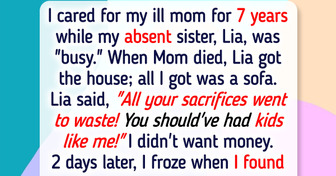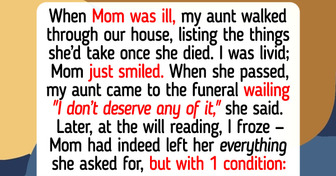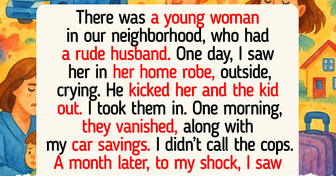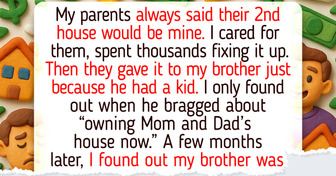11 Nannies Who Faced More Twists Than a Hollywood Thriller
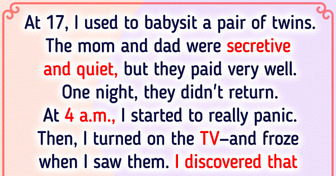

Responsibility starts with us, and in order to help our environment, it is best to practice a sustainable lifestyle—a way of living that aims to minimize people’s environmental impact and its degradation. One way to practice it is through composting, which is nature’s way of recycling.
1. Pet Hair & Human Hair — Both human and animal hair are rich in nitrogen, which is important for plant growth and gives nutrients for your compost. It’s important to keep in mind that hair, particularly that from salon floors, may include a variety of inorganic dyes, lotions, sprays, and other chemicals.
2. Used Coffee Filters & Tea Bags — Paper, a biodegradable substance, is typically used to make coffee filters. They break down easily in compost. The same goes for tea bags, as long as they’re made of compostable materials. They are both composed of nitrogen, which helps the compost pile.
3. Natural Wine Corks —Since natural cork is created from the bark of the cork oak tree, a renewable resource, wine corks made from natural cork are in fact compostable. These corks can decompose over time and help produce humus, the rich organic component of soil that is essential for plant growth because they are organic. Break them into smaller pieces for quicker decomposition.
4. Nail Clippings — Nail clippings meet the criteria and can be composted. They have protein-rich keratin. Putting them in compost bins increases the compost’s value for gardening while also keeping garbage out of landfills. As long as they’re free from polish, they are compostable.
5. Old Spices — They still add nutrients even if they’ve lost flavor. It is advised against adding excessive amounts of strong spices, as this could momentarily upset the compost bin’s balance. Adding more nutrients to your plant soil and cutting down on waste are two great benefits of composting old spices.
6. Toothpicks & Wooden Chopsticks — They can be composted only if they’re made of untreated wood. For faster decomposition, break them up into tiny pieces. Combine them with other biodegradable materials to keep the ratio of ’greens,’ which are rich in nitrogen, to ’browns,’ which are rich in carbon.
7. Paper Towels & Napkins — Composting is an excellent option for plain paper towels as long as they are organic. Be mindful of the materials of the paper towels you put in compost, as not every paper is made from organic materials. Over time, they will decompose and enrich your compost pile with useful carbon-rich materials, as long as they aren’t greasy or full of chemicals.
8. Vacuum Cleaner Dust — Vacuum cleaner dust can be composted, but proceed with caution, only if it’s mostly natural fibers. Dust typically includes both organic matter and inorganic materials, so be careful when using it to compost. When handling dust, always wear gloves and a mask to protect yourself from chemicals and allergies.
9. Pencil Shavings — Pencil shavings and sawdust, which are categorized as ’brown’ composting materials, providing carbon to balance the nitrogen from ’green’ materials, such as food scraps. They are perfect for breaking down easily, enriching your compost, and improving soil structure.
10. Uncooked Pasta & Rice — Just small amounts to avoid pests. Due to the high nitrogen content of rice and pasta, which is carbon-rich, it can enrich the soil. However, they might be challenging. If not composted correctly, they form mold, clump together, and draw bugs. However, they can decompose similarly to any other food waste if the proper conditions are met.
2. Dairy Products — Composting dairy is challenging because of its high moisture and fat content, which slows decomposition by reducing airflow and water balance. It also produces strong odors as it spoils, attracting pests and wildlife.
4. Plastic Tea Bags — It may take years for these tea bags to break down, and when they do, dangerous microplastics are released into the environment. Only compost if they’re 100% biodegradable; check your tea bags.
5. Pet Waste — Composting pet waste is risky due to harmful parasites and bacteria, including Toxoplasma gondii from cat feces, which can contaminate soil and food. To avoid health risks, pet waste should be disposed of in the garbage or toilet. If composting it, use a separate system and avoid contact with gardens or people.
6. Glossy Paper or Magazines — Magazines cannot be composted. The glossy coating and ink on magazines often contain plastic and other chemicals that aren’t beneficial for making high-quality compost. Moreover, the same bright inks that give the pictures a vibrant color may also be harmful, particularly if they decompose and penetrate your soil.
7. Excess Citrus Peels — They can be too acidic for compost microbes. While too much citrus can degrade the compost’s overall quality, it may still benefit plants that thrive in acidic soil. A sufficient amount of brown compost should be added to balance out the citrus. Dried leaves, straw, and hay are a few examples.
8. Dryer lint — Natural fiber lint (from cotton, towels, or sheets) is compostable, while dryer lint from synthetic fibers won’t break down and may spread in the soil. Avoid composting lint if dryer sheets were used, as they contain synthetic materials and chemicals.
9. Weeds with Seeds — Weeds can be composted as a brown material once they have dried and turned brown, meaning they are no longer considered green. However, if your weeds have begun to produce seeds, you should avoid placing them in a passive or static pile, as this may result in spreading weed seeds through your finished compost.
10. Treated Wood or Sawdust — Chemicals can leach into your compost. Not all sawdust is created equal, and there are crucial factors to consider when sourcing sawdust for composting. Depending on its source, the sawdust may contain hazardous chemical contaminants that could affect compost quality and endanger human and environmental health.
To pursue a green lifestyle, here are sustainable living tips focusing on home composting, which is ideal for beginners. Now that you know the composting dos and don’ts from above, let’s first familiarize ourselves with the Green and Brown Material Balance. According to the U.S. Environmental Protection Agency (EPA), composting needs a balance of carbon-rich ’browns’ (dry leaves, wood chips) and nitrogen-rich ’greens’ (food scraps). The ideal mix is 3 parts browns to 1 part greens by volume. This is important to keep a proper and healthy compost pile.
Examples of Green Materials as listed by Calumet Recycles:
Examples of Brown Materials:
It does not end after creating a compost pile at your home, it must be maintained. For microorganisms to efficiently decompose organic materials into high-quality compost, enough moisture, oxygen flow, particle size, and temperature must be maintained. Properly balanced compost should have a 30:1 carbon-to-nitrogen ratio, and piles can reach temperatures of 135°F to 160°F for effective decomposition. To maintain a healthy compost pile, EPA suggested the following:
Follow these, and soon you’ll have rich, nutrient-filled soil for thriving plants!
Proper composting greatly benefits our environment, as mentioned above. Small actions we take can significantly impact our planet by adopting environmentally friendly habits. You can begin your composting journey today.
To learn more about ways to be environmentally responsible, click here.







